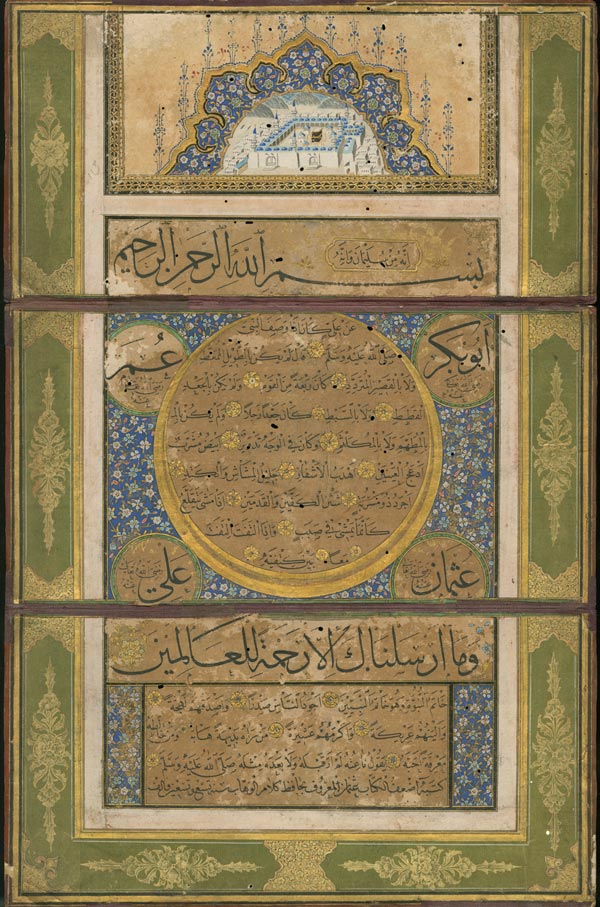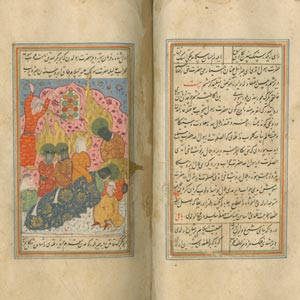Hilye (Verbal Icon of the Prophet Muhammad)
The Show

Hilye (verbal icon of the Prophet Muhammad) Calligraphed by Hafiz Osman AH 1099/1687–1688 CE, Ottoman lands Ink and pigment on paper mounted on three folding panels Special Collections, Hatcher Graduate Library, Isl. Ms. 238
Executed by the famous Ottoman calligrapher Hafiz Osman (1642–1698), this calligraphic triptych verbally depicts the Prophet Muhammad. Organized into a diagram, the text describes the Prophet's moral and physical attributes. The center panel consists of one large circle (göbek, or "navel" in Turkish) flanked by four small circles that frame the names of the first four caliphs, who succeeded Muhammad as leaders of the early Muslim community. At the head of the triptych appears a delicately painted image of the Ka‘ba, the holiest site in Islam that every Muslim, if capable, must visit at least once in their lives. This hilye, or verbal icon of Muhammad, thus provides a contemplative device to envision the Prophet's presence and the sacred city of Mecca. Last but not least, it is executed on three folding panels, thereby allowing its owner to transport it safely and also affix it to a wall much like a religious icon.
Bibliography: Hilye's online catalogue entry; Safwat 1996, 46–51; Taşkale and Gündüz 2006; Zakariya 2003–2004; and Schick 2008.
Return to the Show
